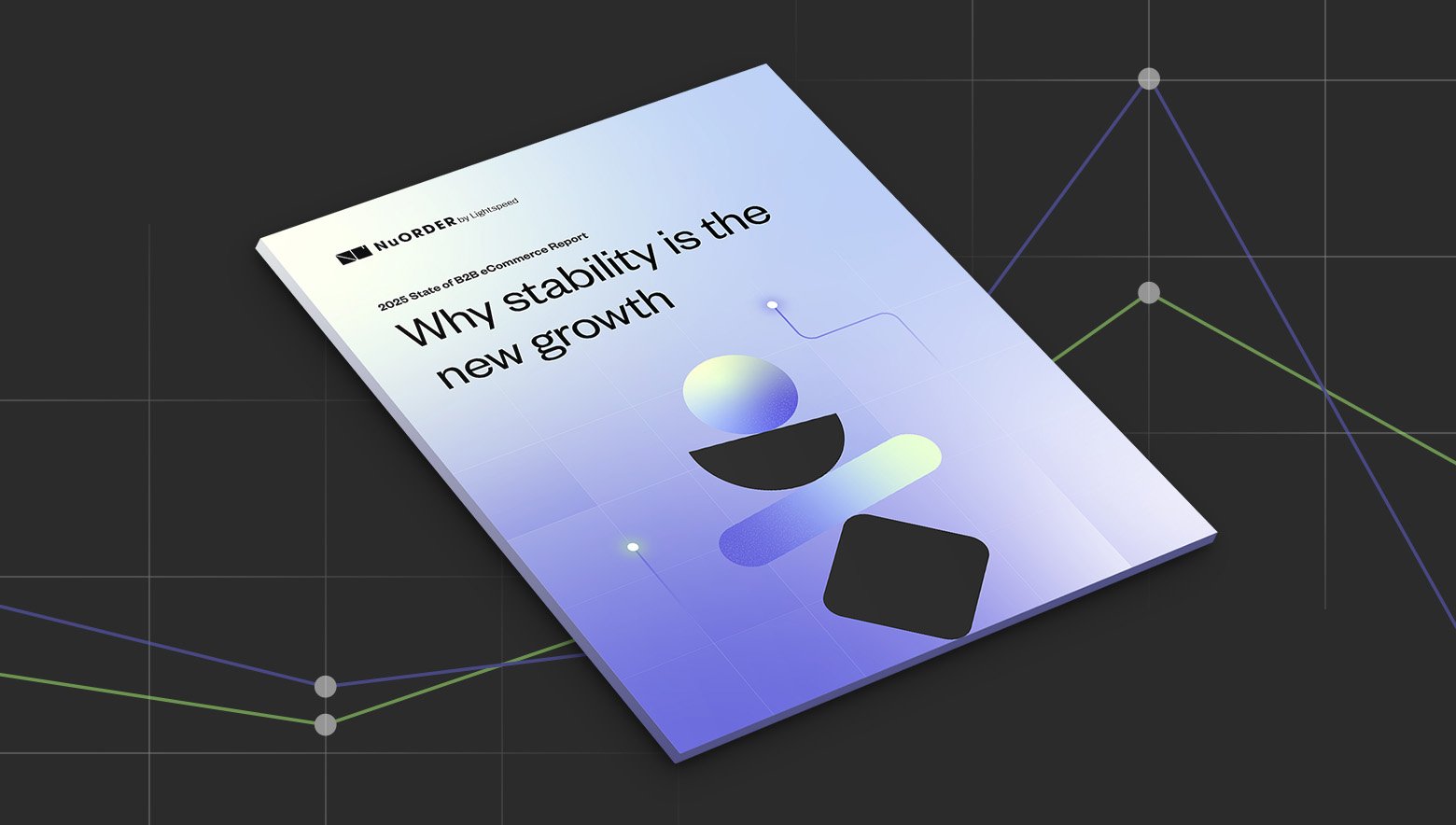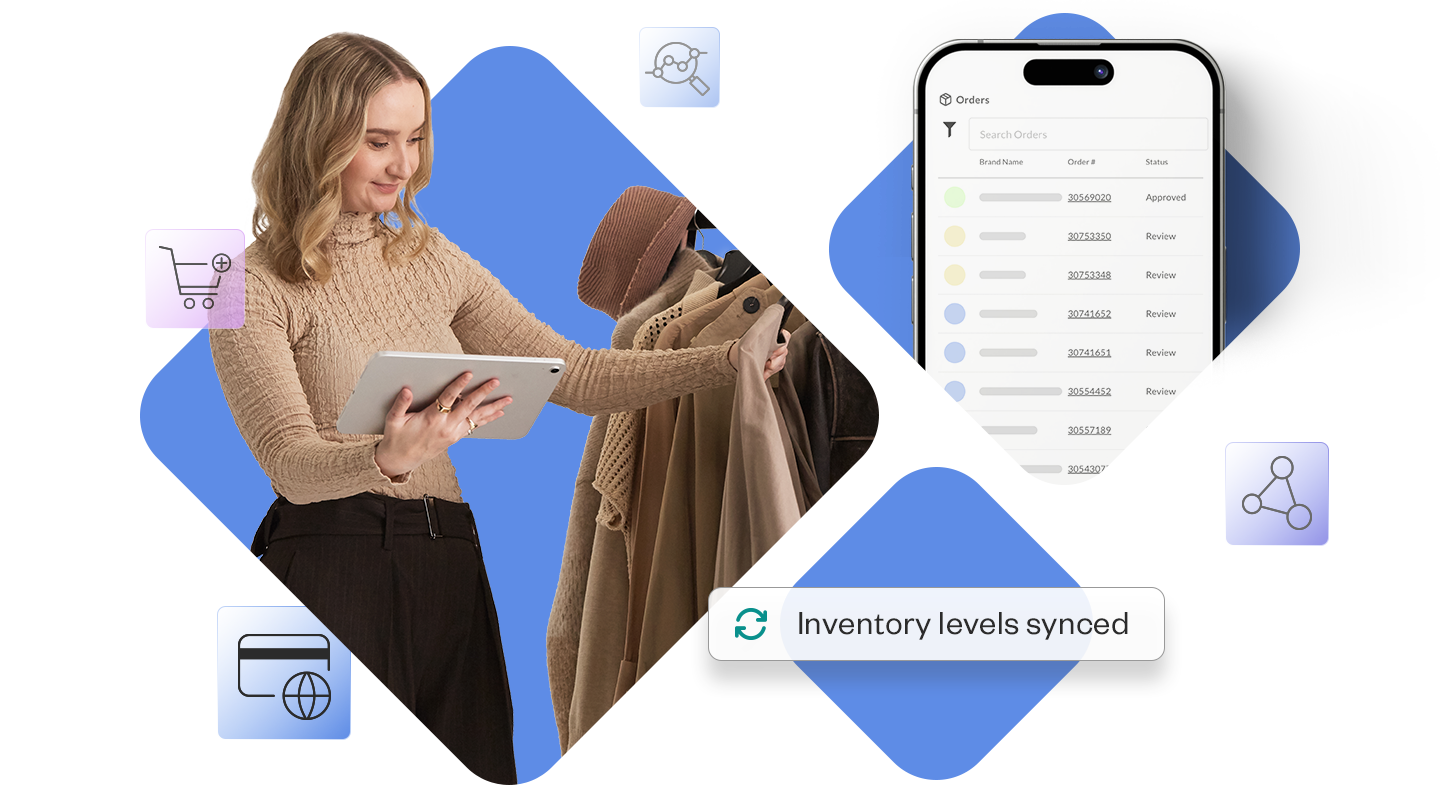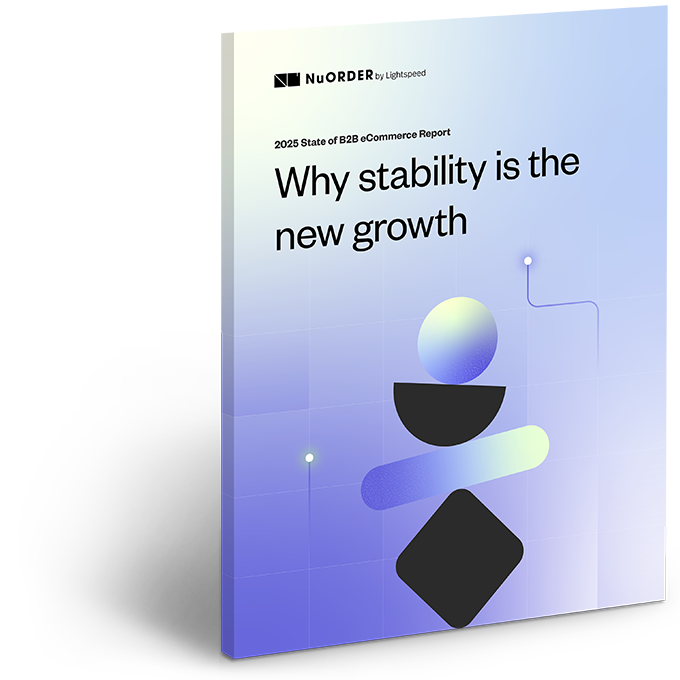The 2025 state of B2B eCommerce cheat sheet
Haven't had the chance to read the NuORDER by Lightspeed 2025 State of B2B Commerce report? Here's a cheat sheet of everything you can expect to find inside!

Our “2025 State of B2B eCommerce Report: Why stability is the new growth” brings together insights from our survey of over 100 wholesale professionals across various industries. The NuORDER by Lightspeed team interviewed customers and non-customers alike about wholesaling, effective pricing strategies, and how the industry is managing risk.
What we learned reflects recent shifts in consumer behavior, changing economic conditions, and market complexity that wholesalers are navigating by going back to the basics of controlled growth and strong supplier relationships.
Wholesalers find stability
Once again, wholesale reigns supreme, ranking as our respondents’ number-one priority in 2025 just as it was in 2024. Wholesale has won a reputation as a profit center offering greater scalability and partnerships. Tariffs and consumer economic anxiety are encouraging companies to prefer sales channels that keep costs low and mitigate risk.
"This does not mean growth has stalled... brands that will lead the next decade of B2B eCommerce will be the ones that balance scale with sustainability, efficiency with innovation, and growth with control."
To battle-tested DTC brands, wholesale investment increasingly represents a viable path toward resilience. Omnichannel sales, AI adoption, and B2B eCommerce are helping brands approach growth more sustainably and intelligently.
Brands prefer fixed pricing in 2025
With this year’s significant changes and industry pressures, pricing strategy is centered on predictability:
- 52% of brands favor fixed pricing
- Just 17% say dynamic pricing is essential
We believe this fits with overall trends toward measured, strategic growth. Responsive pricing driven by real-time data and volume purchasing remain viable secondary strategies for 80% of the brands surveyed, but they’re taking a backseat to static pricing for now — a move that’s unlikely to change if economic uncertainty increases.

Suppliers, risk, and eCommerce on wholesalers’ minds
When asked how they’re optimizing supply chains, 43% of wholesalers identified improving supplier relationships as a top priority for the coming year. Risk mitigation is on wholesalers’ minds with demand forecasting and contingency planning rounding out the top three in the survey.
In pursuit of these efforts, businesses are turning to eCommerce technologies, but express challenges when it comes to integrating new technologies:
- Only 25% have fully integrated their B2B eCommerce platform with their ERP
- Just one in five cite AI and automation as a priority
For these brands, the potential drawbacks of risk prevention, such as missing out on opportunities, isn’t a major concern yet but could inadvertently limit future growth. And single-digit revenue growth is predicted to continue in 2025 for the fashion industry according to McKinsey’s The State of Fashion 2025 report, so remaining aware of potential opportunities should remain a priority for wholesale businesses.
Steady eyes to the future
Wholesale’s importance appears to be growing for fashion brands as businesses prepare for a year of change and slower, steady growth. We believe doubling down on wholesale channels this year will help more companies reduce financial risks and stay competitive by scaling revenue and offering greater predictability.
Omnichannel as a truly hybrid commerce model can give brands the resilience they seek — a goal that may be achieved with the right investments in digital transformation and automation.
Get on the list
Wholesale tips and industry news you can’t miss, delivered weekly

